The West Village in New York. The Castro in San Francisco. Boystown in Chicago. These were once America’s go-to gayborhoods — the homo-riffic districts where every small-town Dorothy looking to escape heteronormativity could live among their own in the big city. Each Ozian dreamland was the result of a great gay migration that started in the wake of World War II, and for the second half of the 20th century, they became ground zero for gay life.
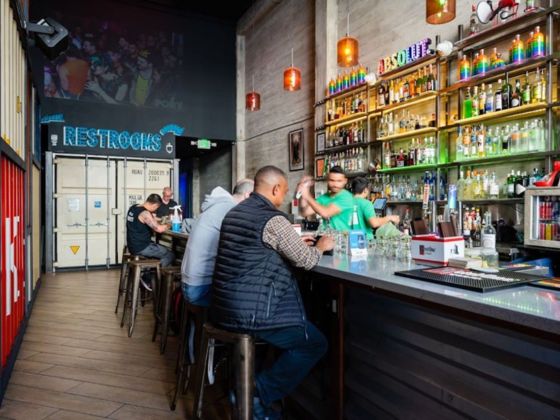

Meet the New Gayborhoods of the US
Today, these neighborhoods are noticing a marked decline in their number of LGBTQ inhabitants. Pushed out by gentrification and tempted by assimilation, it has become too expensive to live in the areas once cornered by queer folks and safe to expand to other neighborhoods. As a result, many journalists are calling the dream of an American gayborhood dead. But what if it isn’t? What if, instead, the dream has changed to reflect the times in which we live?
Sociologist Amin Ghaziani suggests that LGBTQ urbanites are foregoing the idea of a singular gayborhood in exchange for what he refers to as cultural archipelagos: queer pockets throughout a city’s landscape that reflect a diverse expression of sexualities and lifestyles. These new districts don’t look like the country’s gayborhoods and aren’t always so easy to identify. As the definition of what it means to be queer in the US is changing, so are the areas that LGBTQ people call home. Here are six cities around the United States where these new archipelagos are beginning to take shape.
1. Chicago: Andersonville
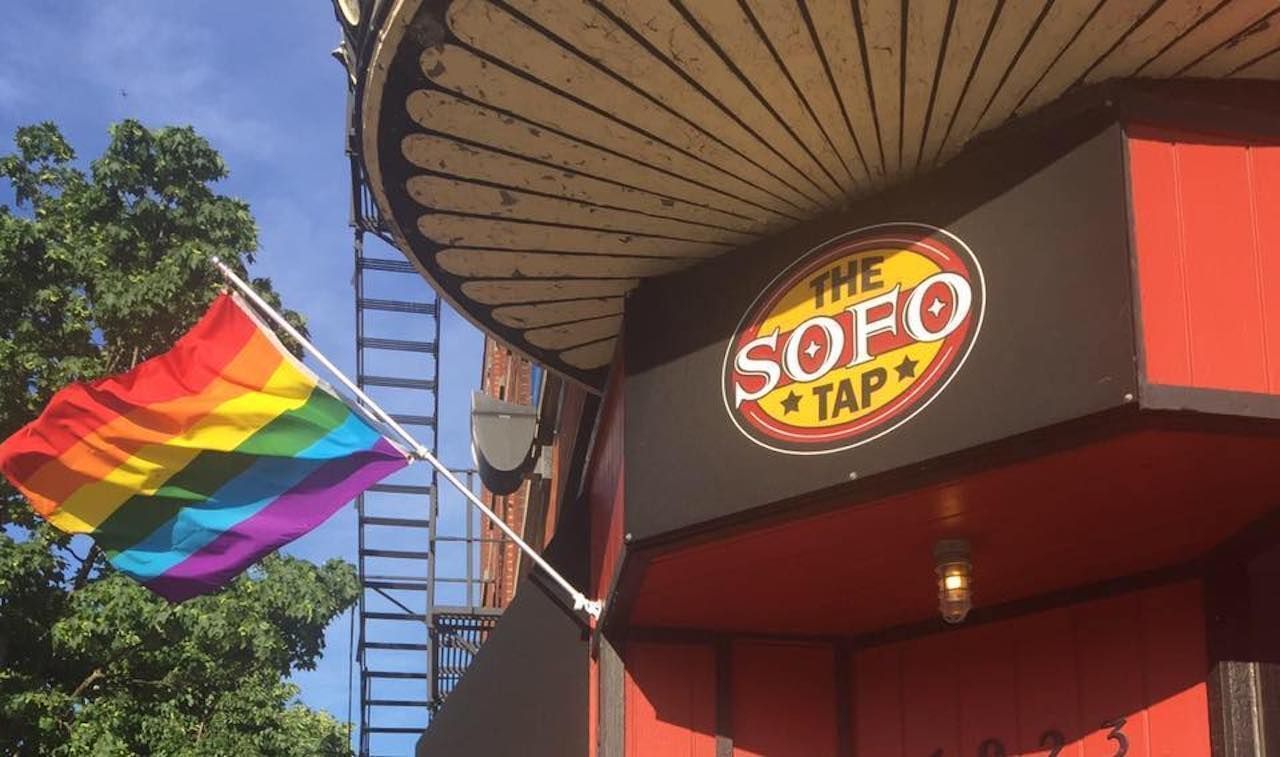
Photo: The SoFo Tap/Facebook
Halstead Street has been the central vein running through Chicago’s OG gayborhood, Boystown, for 50-plus years, but Clark Street, the commercial artery in the heart of nearby Andersonville, is emerging as the new frontier for LGBTQ residents.
Andersonville is no stranger to the queer community. The neighborhood earned the nickname “Girlstown” in the 1990s following the opening of feminist bookstore Women and Children First. Once a Halstead staple, the store migrated north to avoid skyrocketing rents and became an anchor in Andersonville as Chicago’s lesbian residents flocked north. Nearly 20 years later, the boys are following in their footsteps.
While many gay-centric businesses in Boystown have recently shuttered and reopened as more straight-friendly establishments, the queer offerings in Andersonville are expanding. SoFo Tap is the local bear bar, Atmosphere is the go-to for go-go boys, and Jackhammer has been going strong as a leather dive for 20 years.
What makes Andersonville so appealing isn’t just these queer establishments but the diverse array of other noteworthy offerings. The neighborhood’s historically Swedish population still has a presence in the local cuisine scene (check out Svea Restaurant for breakfast). Lost Larson, a Scandinavian-inspired bakery, and Little Bad Wolf, a craft-beer Elysium, give the ‘hood culinary clout, and the area’s boutique stores offer shopaholics an excellent reason to get into some serious credit card debt. Andersonville is proof that “gay” isn’t the only thing that makes a neighborhood great for queer residents.
2. Los Angeles: Downtown LA (DTLA)
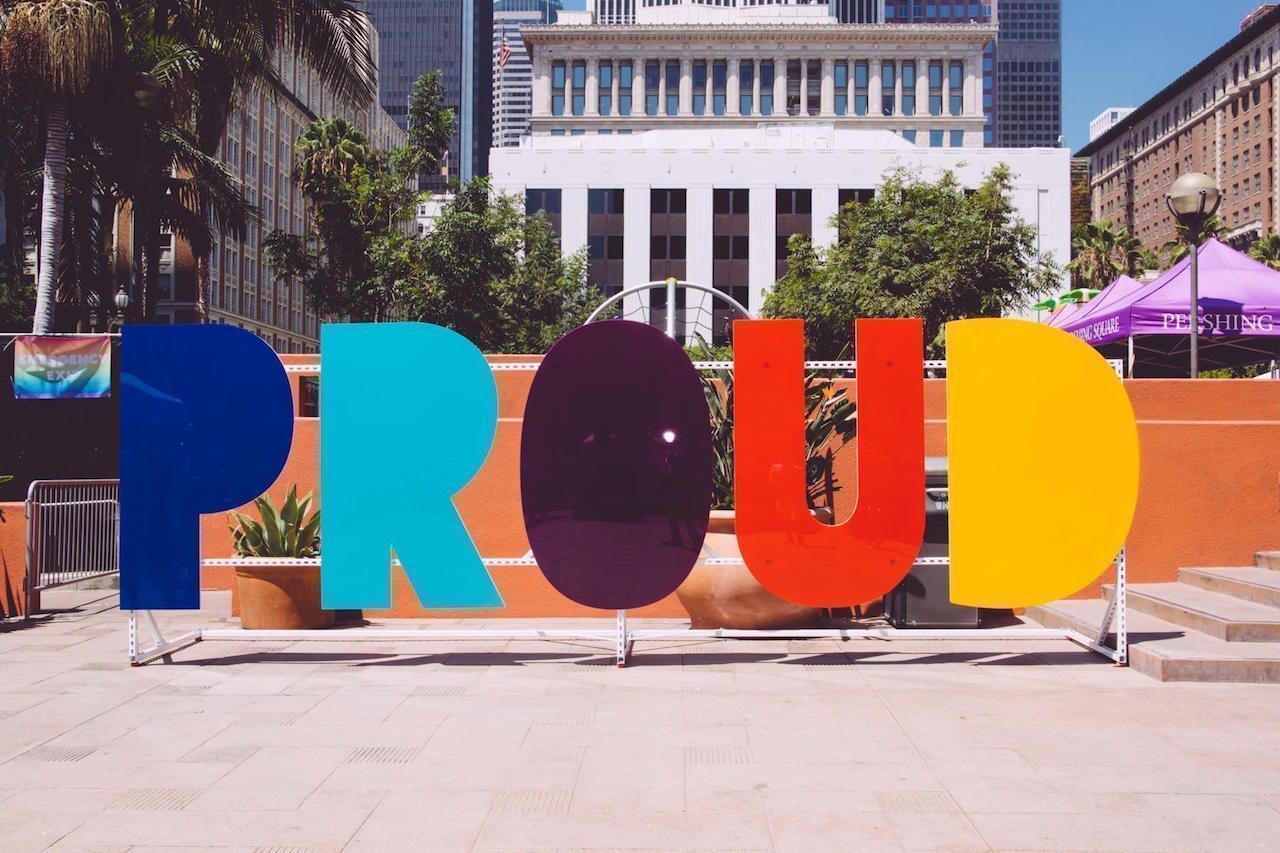
Photo: DTLA Proud
While WeHo reigns supreme as LA’s most fabulously queer locale, Downtown LA is making a comeback after a half-century hiatus. Cooper Do-nuts, located on Main Street in DTLA, was once a popular cafe sandwiched between two gay bars and frequented by the local queer community. After an attempt by police to arrest patrons in 1959, an army of drag queens, trans women, lesbians, and gay men fought back in what’s believed to be the first LGBT uprising in the United States.
LA’s LGBTQ residents began reclaiming their historic turf after three new gay bars opened in 2015. Although one has since shuttered, Precinct and Redline have become must-visit DTLA watering holes. Precinct, a sprawling industrial complex featuring drag shows and dance parties, is the place to get rowdy on a Saturday night; Redline has a nightclub vibe, too, but is notable for a surprisingly tasty food and cocktail menu. Nearby, the divey Latinx bar New Jalisco is still going strong after 30 years. The burgeoning queer scene has gained so much momentum that DTLA started throwing its very own Pride festival, DTLA Proud, in the summer of 2016.
DTLA is part of a queer archipelago dotted around LA’s urban sprawl that includes WeHo, Silver Lake, Los Feliz, Venice, and even Laguna Beach. What makes DTLA unique is its access to myriad cultural offerings. You can walk to Grand Central Market, the Frank Gehry-designed Walt Disney Concert Hall, and world-class museums like the Broad and MOCA. With no need to worry about the city’s notoriously bad traffic, it’s surprising the gay community didn’t come home to this ‘hood sooner.
3. San Francisco Bay Area: Lake Merritt, Oakland

Photo: The Port Bar/Facebook
The Castro in San Francisco is the crowning jewel of the US’s gayborhoods, but as the city continues gentrifying with the onslaught of the tech industry, many lament the loss of the neighborhood’s queer identity. The influx of straight folks may seem a sad fate — what are rainbow-painted streets without queer residents to walk among them? Historically, however, San Francisco’s gayborhood has always been transient. The city’s first queer community congregated along the Barbary Coast (modern-day Chinatown) in the early 1900s, migrated to North Beach in the 1930s, then to Polk Gulch in the 1960s, before settling into SoMa and the steep-hill streets of the Castro in the 1970s. In 2020, it appears that queer life is on the move once more.
As rents continue rising, LGBTQ people are leaving San Francisco for a new, affordable Bay Area location: Oakland. Here, Lake Merritt is catching on as an up-and-coming gayborhood, but not in the ways one might think. There’s only one gay watering hole of which to speak — Port Bar, which opened in 2016 — and while a brand-new LGBTQ Comunity Center opened in 2017, there isn’t much else in the vicinity directly related to queer life. Still, Oakland has the third-highest concentration of gay and lesbian people in the country’s 50 largest cities, second to nearby San Francisco and Seattle.
Unlike both these cities, there’s no Pride flag pointing tourists to a leather fetish store or distinct area to go gay-bar hopping. Instead, Lake Merritt and the rest of Oakland are defining a new kind of gayborhood, where the lives of LGBTQ individuals are sewn in seamlessly with the rest of the population. Whether that’s a joyous result or negative consequence of equality remains to be seen. Either way, should the residents of Lake Merritt get a hankering for their homeland, the Castro is only a 40-minute train ride away.
4. Atlanta: Decatur, East Atlanta, and Buckhead
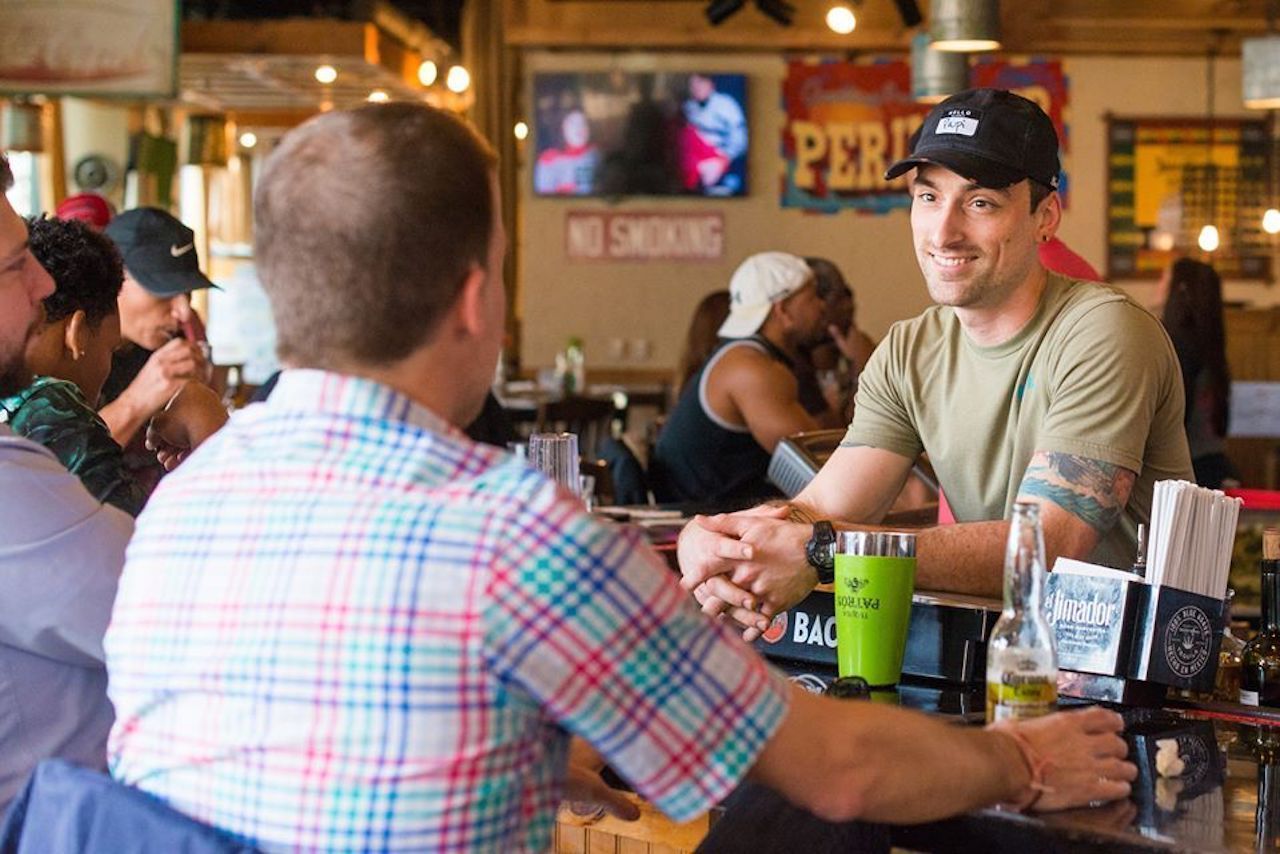
Photo: Tin Lizzy’s Cantina/Facebook
Atlanta is the gay capital of the South, and Midtown’s Peachtree Street is its obvious epicenter, but gentrification is slowly reshaping the neighborhood. In 2013, a long-running Midtown gay bar called The Armory was torn down to make way for high-rise apartments, a fitting snapshot of recent changes. As a result, many queer folks are moving elsewhere and creating multiple communities similar to the suburban sprawl found in Los Angeles. Buckhead, home to Woof’s, Atlanta’s only gay sports bar, is a popular destination close to queer watering holes around Ansley Mall (Oscar’s Bar, Mixx, and Felix’s Atlanta are just a few worthy of note).
Cabbagetown, Grant Park, and East Atlanta — all adjacent neighborhoods — have seen a recent uptick in LGBTQ homeowners searching for affordable prices that elude them in Midtown. Tin Lizzy’s Tex-Mex joint is popular with a gay crowd, and bars like The T and Mary’s are quirky, low-key alternatives to the bars found on Peachtree. Decatur and Avondale Estates, two outlying neighborhoods known for their vibrant lesbian communities, don’t feature businesses that cater to an explicitly queer community. Still, both zip codes are home to more gay families per capita than anywhere else in the state of Georgia. It makes sense that lesbians would claim this area as their own — Decatur is where the Indigo Girls, the quintessential queer folk-rock duo, got their start.
5. Washington, DC: Logan Circle and Shaw
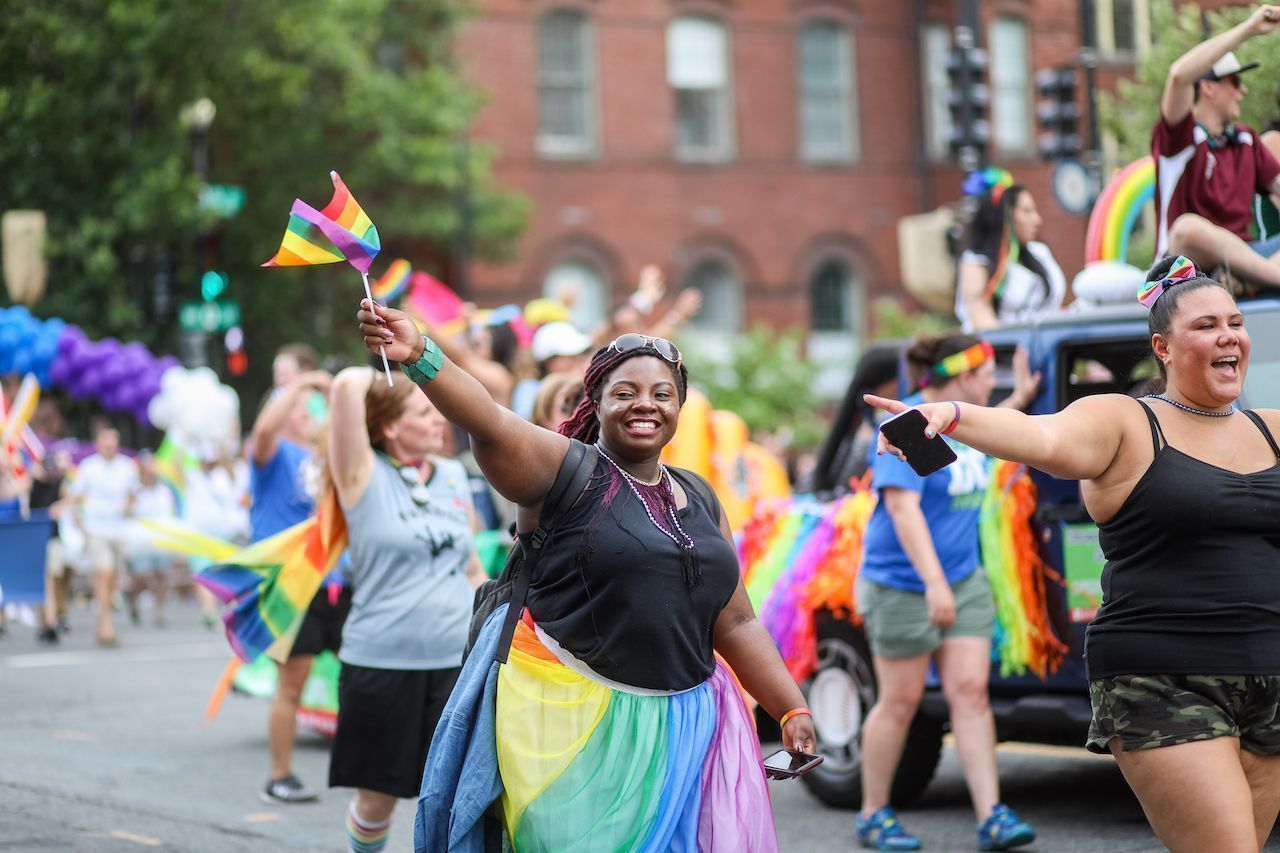
Photo: Nicole Glass Photography/Shutterstock
Once upon a time, DuPont Circle was the de facto destination for gay travelers visiting the nation’s capital. Bookstores like Lambda Rising, which opened in 1974, provided safe spaces for community gatherings; an entire queer neighborhood of bars, restaurants, and LGBTQ centers sprang forth. Lambda Rising closed in 2010, and in the past decade, it’s become questionable whether DuPont Circle is worth mentioning as a gay center in the city anymore. Sure, the area is home to JR’s and a handful of other popular gay bars, but as rents have become too expensive for all but the wealthy, many queer residents are headed eastward and taking the gay establishments with them.
In many ways, DuPont has passed the gayborhood’s rainbow baton to nearby Logan Circle. Here, you’ll find bars like Number Nine (an upscale LGBTQ cocktail lounge) and Trade (a cozy hipster dive with drag shows and a spacious back patio). Both gay establishments mix in with a serious cuisine scene (check out Le Diplomate for delicious French delicacies), world-class performance venues (see what’s playing at Studio Theater), and classic Victorian architecture that rivals what you’ll find in the old ‘hood.
Heading even further east is Shaw, another trendy neighborhood that’s recently gained traction as an LGBTQ destination. The Dirty Goose, a classy martinis-and-cocktails establishment with a rooftop terrace, is the perfect scene for DC’s contingency of JCrew-wearing gays. Nellie’s Sports Bar, a kitschy spot for viewing basketball and RuPaul, welcomes an alternative crowd for standard drinks and pub food. There’s even a tri-level bar catering to the local bear community, Uproar Lounge and Restaurant, which opened in 2016. Both Shaw and Logan Circle follow the path of other modern gayborhoods, where the focus is on integrating with a diverse community instead of isolating to form their own.
6. New York City: Williamsburg, Bushwick, and beyond
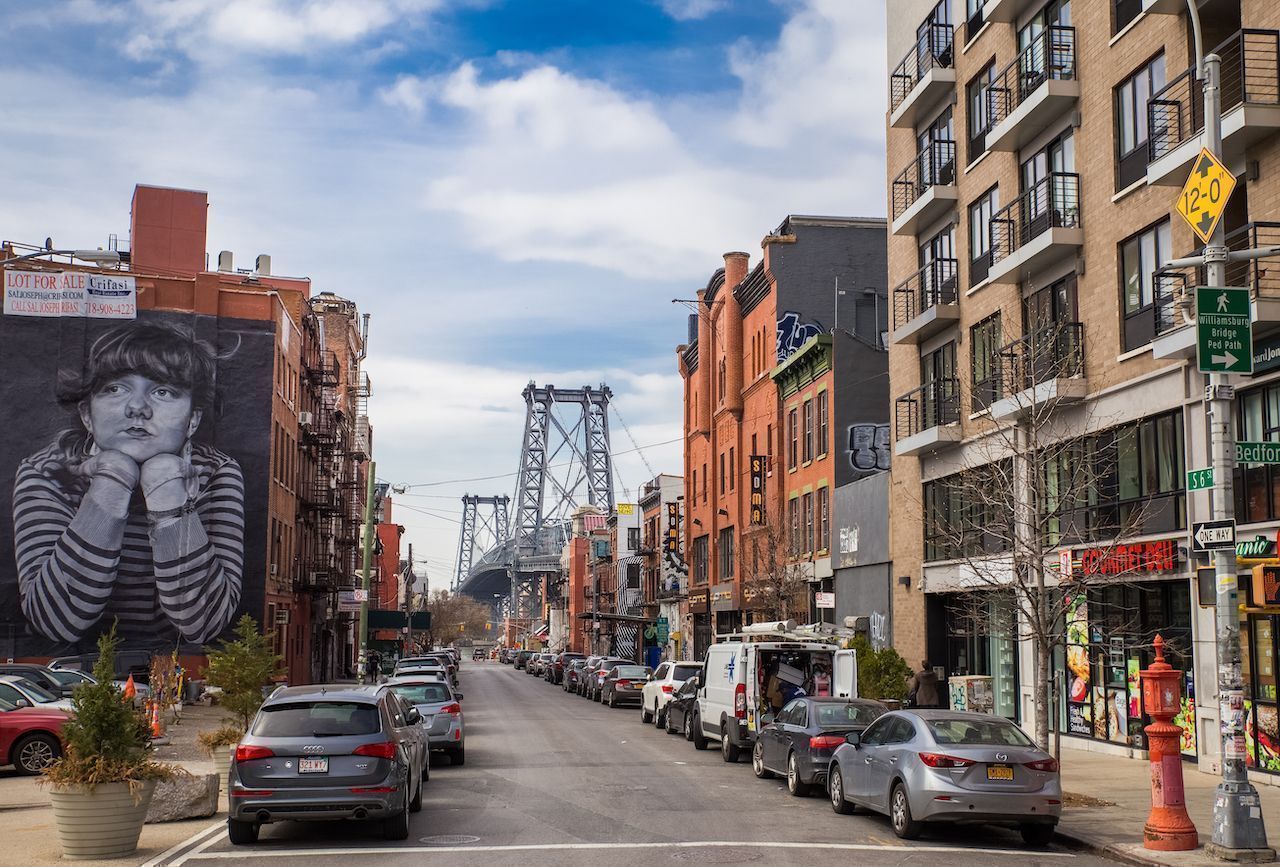
Photo: Mihai Speteanu/Shutterstock
Many espouse Manhattan as the center of NYC’s queer life, but that notion has become outdated in the past decade. The historic West Village is to LGBTQ residents what Epcot is to tourists at Disney World: a replica of real-life where no one lives but everyone loves to get drunk. Its iconically queer neighbor to the north, Chelsea, isn’t overwhelmingly gay anymore, either. There may still be a bunch of sexagenarian muscle daddies leftover from its hey-day (if you’re hunting for one, check the Eagle), but gentrification has shuttered many of the LGBTQ meeting places that once populated the area. Hell’s Kitchen is the island’s newest iteration of the gayborhood, and while it’s still the queen of Manhattan’s scene, there’s a new locale emerging to share the limelight. The only catch? You have to cross a bridge to get there. Luckily, this destination is chockablock with queer haunts so diverse you may never return to Manhattan again.
Williamsburg, the ‘hood that turned industrial grime into hipster glam, is New York’s newest outpost for queer life. Gay bars like The Rosemont, Macri Park, and veteran staple Metropolitan are happening haunts for a classic night on the town. The recently opened 3 Dollar Bill, a queer event and performance space, attracts an eclectic crowd with parties thrown by people like nightlife legend Susanne Bartsch, pop-music prince Ty Sunderland, and the hedonistic homos behind Brut. A nearby concert venue, Elsewhere, often sells out for the raucous gay dance party Horse Meat Disco. Even further east, in Bushwick, nightlife favorites House of Yes and Mood Ring are decidedly queer spaces too hip for the straight jackets of labels. Much like these nightclubs, Brooklyn’s new frontier is focusing less on creating a gayborhood and more on creating all-inclusive communities.
Williamsburg and Bushwick aside, Brooklyn is an expansive queer archipelago as vibrant as Manhattan. Nearby Park Slope has a long history as a lesbian enclave. Clinton Hill and Fort Greene are seeing an influx of LGBTQ residents. If you sit for long enough at a park in Brooklyn Heights, you’re bound to see a flurry of gay dads pushing strollers toward the waterfront. Like so many cities, these new neighborhoods bear no resemblance to the West Village’s cluster of gay establishments. Brooklyn’s emerging queer enclaves are building communities with a blueprint of their own.